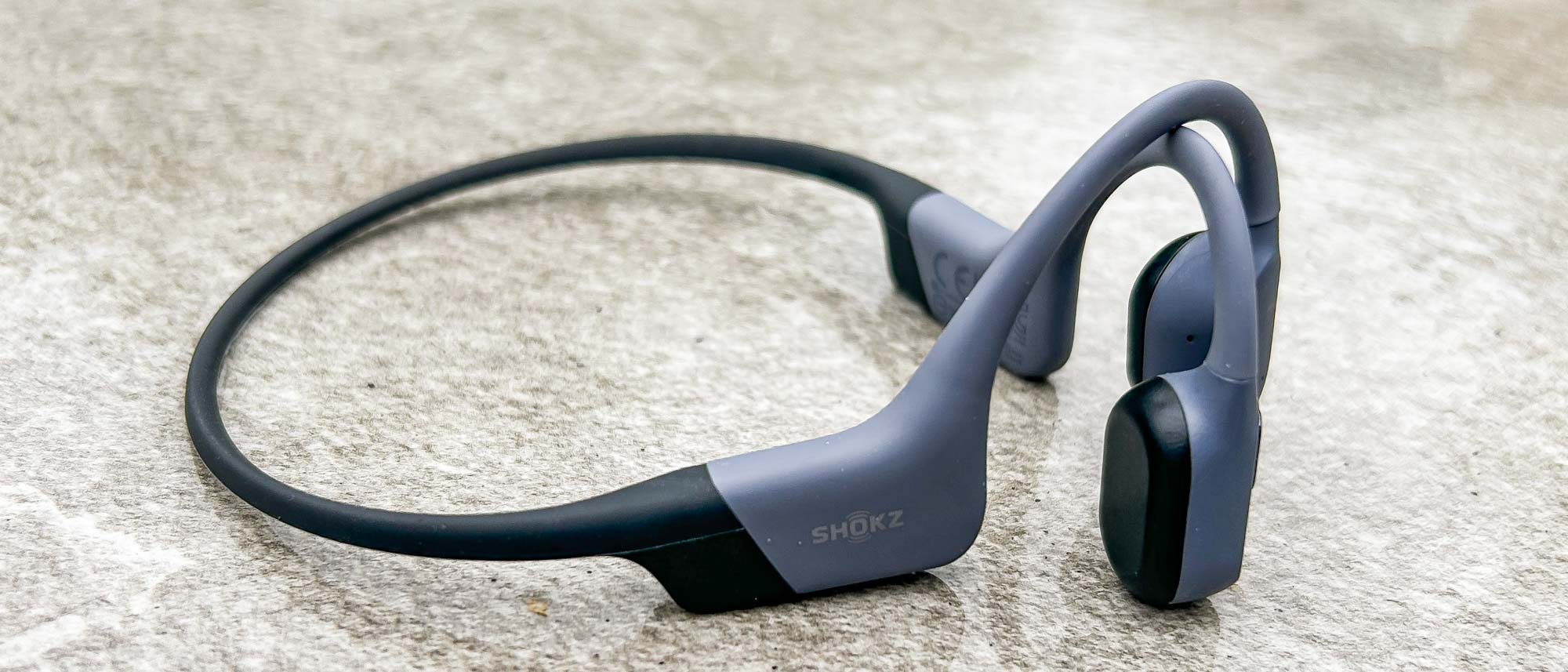Tom's Guide Verdict
The Shokz OpenSwim Pro combine the features of the Shokz OpenRun and OpenSwim headphones to offer the ideal all-in-one solution for multisport athletes. They’re expensive, but they're some of the greatest bone conduction headphones available.
Pros
- +
Comfortable and secure fit
- +
Bluetooth and MP3 playback
- +
Waterproof and suitable for swimming
Cons
- -
More expensive than others
- -
Shorter battery life with MP3 playback
- -
No Mini version yet
Why you can trust Tom's Guide
Price: $180 / £169
Colors: Gray, red
Battery life (rated): 9 hours, 6 hours (MP3 mode)
Connectivity: Bluetooth 5.4
Water resistance: IP68
Weight: 1oz
The Shokz OpenSwim Pro are the headphones that have been missing from Shokz’s range, offering a combination of Bluetooth and MP3 playback that makes them ideal for multisport athletes who want headphones to use when swimming and during other workouts.
They are the best bone conduction headphones available, but also more expensive than any others I’ve tested. There might be better value available in opting for another brand — Naenka is one that has cheaper headphones with Bluetooth and MP3 playback — or a set of Shokz with either Bluetooth or MP3 playback, rather than both, depending on what you need.
Shokz OpenSwim Pro review: price and availability
The Shokz OpenSwim Pro went on sale in June 2024 and are available from Shokz directly as well as third-party retailers. They cost $179.95/£169 at Shokz's store, making them the joint-most expensive bone conduction headphones in Shokz’s range, bring the same price as the OpenRun Pro and $30 more than the OpenSwim.
Shokz OpenSwim Pro review: design and fit
The OpenSwim Pro have the same design as Shokz’s other bone conduction headphones, with over-ear hooks joined together by a thin but strong band that runs around the back of the head. The band is made from a nickel-titanium alloy and has some flex but can’t be adjusted to change the fit.
There is only one size of the OpenSwim Pro available so far — you can get a Mini version of the Shokz OpenRun and OpenRun Pro headphones with a shorter band that I prefer because it doesn’t stick out so much from the back of my head.
Vibration drivers sit on the cheekbones just in front of the ears, leaving your ears completely clear to hear your surroundings. The headphones are very lightweight at 0.96oz and are comfortable for wear for hours on end.
The fit is also very secure for all kinds of workouts. They didn’t move at all during runs and bike rides, or when doing strength workouts where I was jumping up and down from the floor. When lying back on a bench or on the floor for exercises the band at the back of your head can sometimes get in the way, but the headphones still stay put.
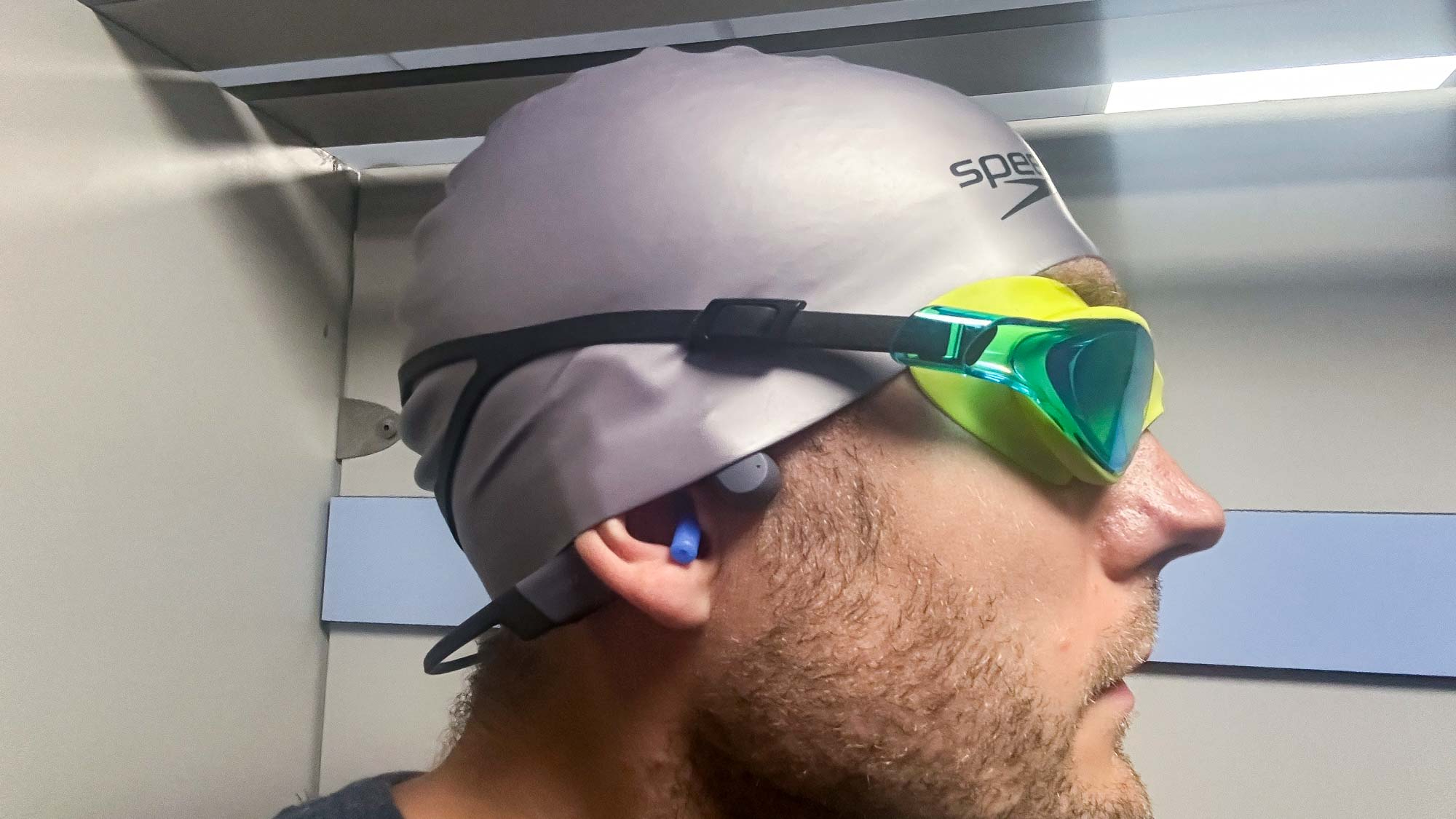
They are also comfortable to wear alongside a hat and sunglasses during outdoor activities, and also under a swimming cap alongside goggles when in the water. Under a swimming cap there is a bit more pressure on the top of the ear where it is held against the hook part of the headphones, but I only really noticed this once I’d left the water and took the cap off.
When swimming in a pool the hook on the headphones holds them in place when pushing off, and with the extra security of part of them being held under the cap I had no fears of the Shokz OpenSwim Pro coming loose in the water.
The headphones are IP68-rated and so can be submerged in water up to two meters deep for up to two hours, and they come with a two-year warranty for added peace of mind. They have 32GB of storage for music and support MP3, WMA, FLAC, WAV, AAC, M4A, APE files, and use Bluetooth 5.4 for easy connectivity to other devices, with multipoint pairing for two devices available.
To ensure a waterproof design, the Shokz OpenSwim Pro have a proprietary magnetic charger, which is less convenient than a standard USB-C one — mislay this cable and you’ll have to buy a new one from Shokz.
Shokz OpenSwim Pro review: controls
There is a multifunction button on the left cheek pad of the headphones which you can use to play/pause and skip music. Using the partner Shokz app you can also customize what holding this button does — either you can set it to activate your phone’s voice assistant or switch between Bluetooth and MP3 modes.
On the pad that sits behind your right ear there are volume controls, with the volume up button also being the power button on the headphones. You can also customize what happens when you press both volume up and down at the same time, picking between voice assistant and mode switching.
When using MP3 mode you can also switch between normal, shuffle and repeat modes by holding the volume up and multifunction button.
I found the controls were easy to use during all kinds of workouts, including swims, and there are voice notifications and sounds to indicate that your presses have been registered on the headphones.
Shokz OpenSwim Pro review: sound quality
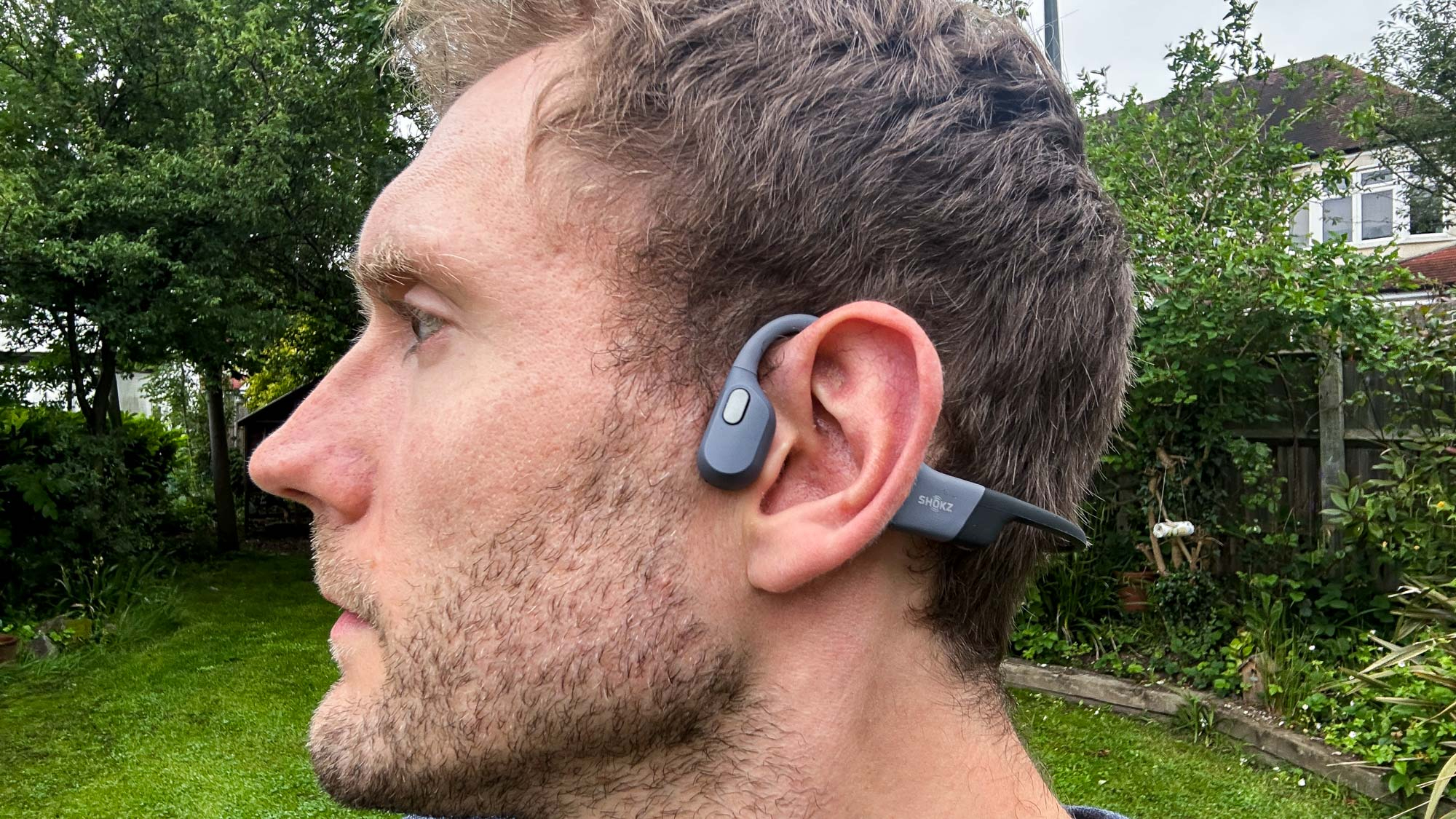
The bone conduction design of the Shokz OpenSwim Pro means that they do not offer the same level of sound quality as in-ear or over-ear headphones. They are built for a different purpose, to allow extra awareness during workouts and as a result don’t offer any passive noise cancellation and the bass lacks punch in particular.
For bone conduction headphones, however, they do sound very good, with detailed and powerful sound that particularly shines when swimming with the headphones submerged.
They come with ear plugs you can use in the water, and the first time you swim with the headphones it’s impossible not to be impressed at how good they sound via vibrations alone. When listening to Arcade Fire’s “Wake Up” in the water the full range of sound came across well with enough clarity in the upper ranges.
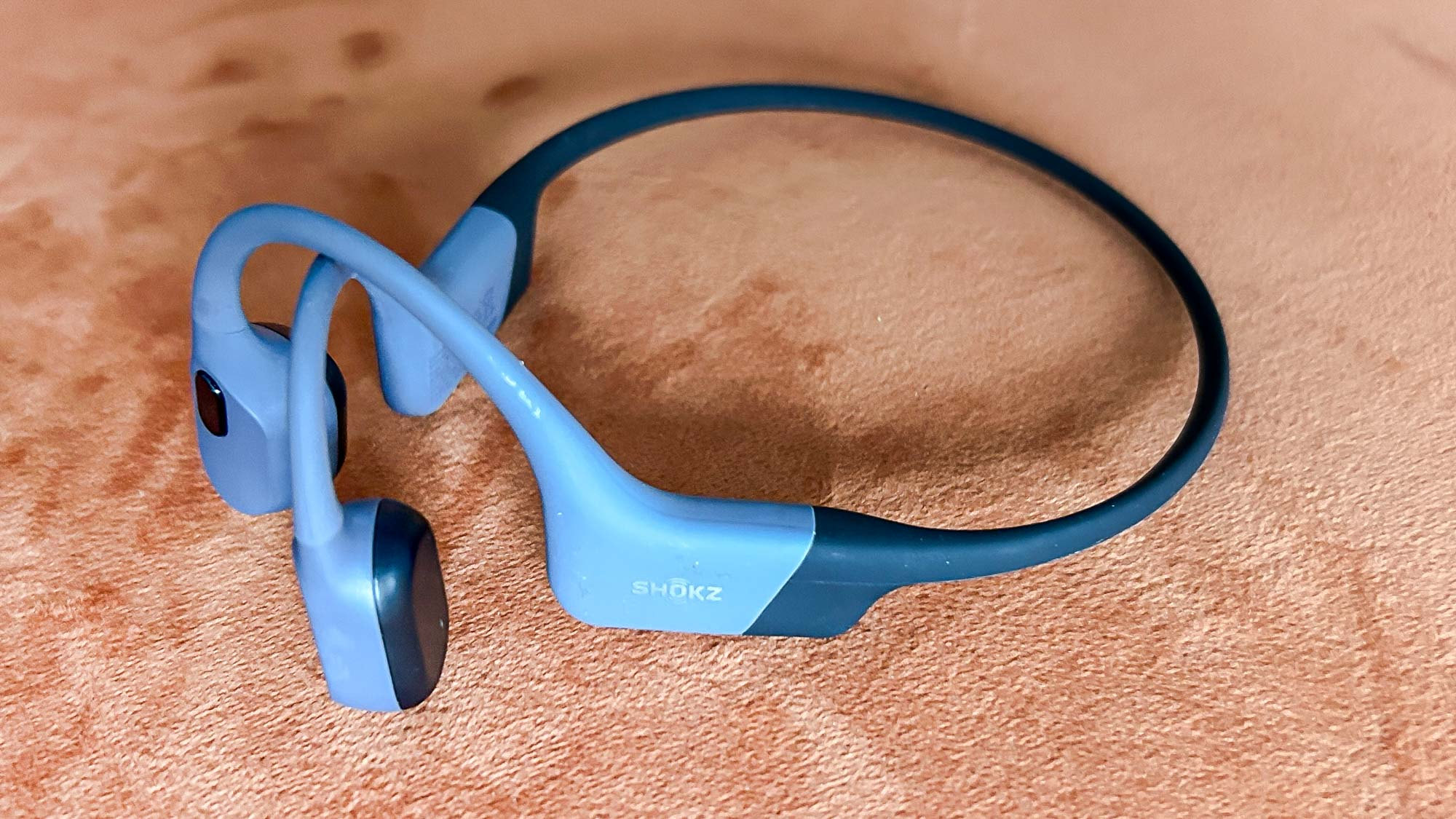
When doing outdoor workouts the sound is less impressive, especially in loud environments when I found that my music was drowned out and I missed the extra bass and power of in-ear headphones, or even open headphones like the Bose Ultra Open Earbuds and Shokz OpenFit that place a speaker near the ear canal without blocking it.
In quiet environments, however, the sound quality is good enough to enjoy a range of music. I listened to Dua Lipa and Billie Eilish’s latest albums more or less on repeat during my time with the headphones and while lacking some of the bass of in-ear headphones, the OpenSwim Pro still sound great.
There are two EQ modes for Bluetooth playback in the app, with a standard setting and one designed for vocals. There are also two EQ modes for MP3 playback, with one being designed specifically for swimming. I didn’t find these extra modes added much to my experience, and generally just used the standard mode even when listening to podcasts and in the water.
I have also tested the Shokz OpenRun Pro and Shokz OpenSwim headphones and found that the OpenSwim Pro matched the sound quality of those headphones. If you’re planning to use bone conduction headphones either when swimming or on land, you can’t get better than the sound quality of the Shokz OpenSwim Pro.
Shokz OpenSwim Pro review: battery life
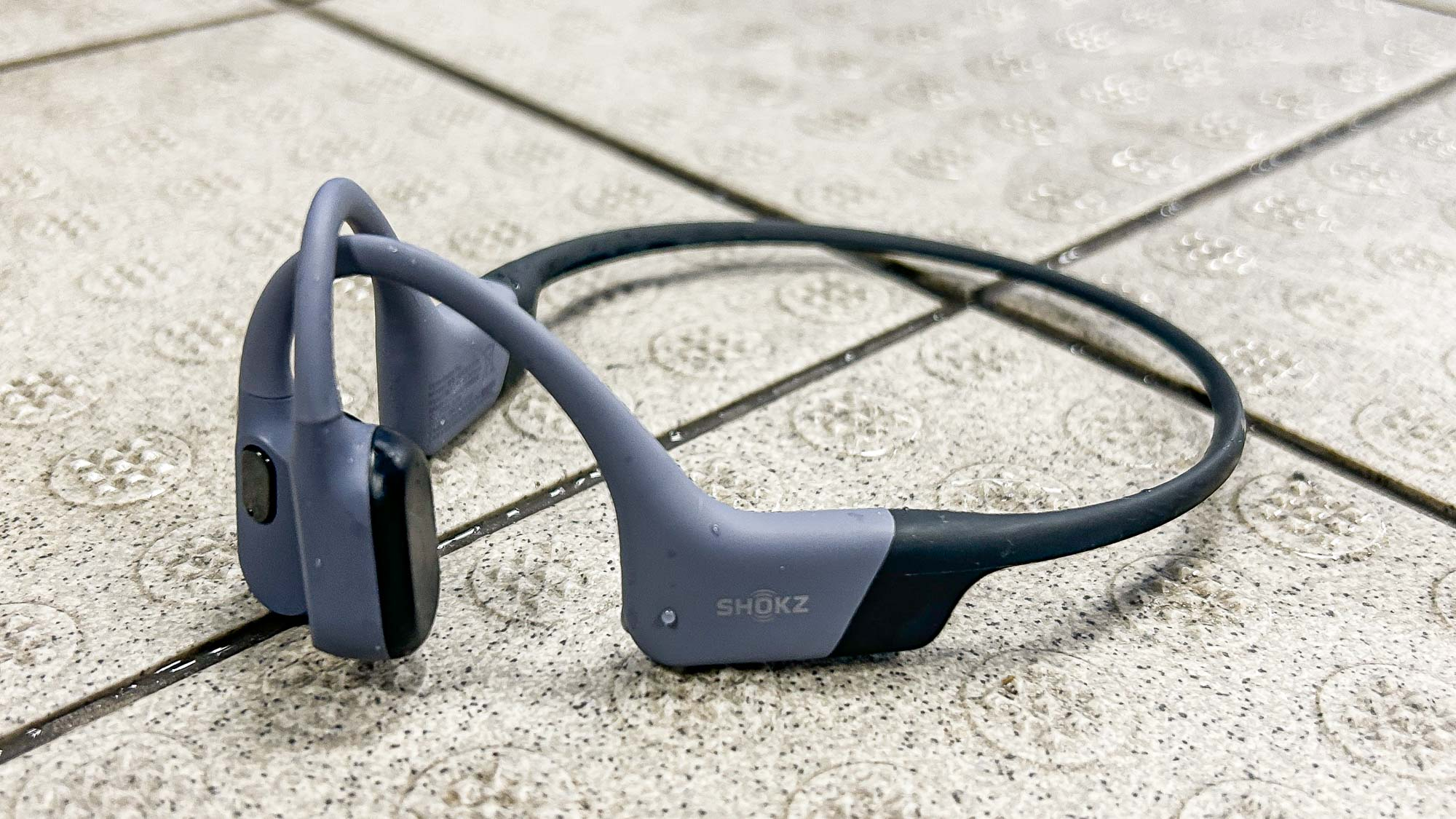
The Shokz OpenSwim Pro are listed as lasting nine hours on a charge when using Bluetooth playback, and six hours if using MP3 mode. The battery level is given when you turn on the headphones and a 10-minute charge will give you three hours of playback for music if you do find out you’re low just before a workout.
That’s a little less than you get from the OpenRun Pro, which offer 10 hours of Bluetooth playback, and the OpenSwim, which last eight hours in MP3 mode.
I’ve tested all of Shokz’s bone conduction headphones to date and always find they come up short of the listed battery life by at least an hour if you have the volume raised to near the max, which I find necessary to hear my audio during outdoor workouts.
Even with that in mind the battery life is long enough to last most outdoor activities, though if you’re planning to use the MP3 mode for a marathon or particularly long bike ride I’d lower the volume to medium levels to extend battery life.
Should you buy the Shokz OpenSwim Pro?
The Shokz OpenSwim Pro are my favorite bone conduction headphones I’ve tested and combine the best features of the OpenRun and OpenSwim to offer the ideal option for people who swim as well as doing other workouts.
As with all bone conduction headphones they are not great for general use and your audio will be drowned out when traveling in particular, but the sound quality is good enough to be enjoyable when in quiet environments.
If you want an open design with better sound quality then headphones like the Bose Ultra Open Earbuds and Shokz OpenFit are good options, though you can’t use them for swimming. If you just swim the OpenSwim are a better value option, and the Shokz OpenRun are better value for those who stick exclusively to land activities.
If you do want the combo of Bluetooth and MP3 playback for less, the Naenka Runner Diver line of headphones is worth looking at, but I find the battery life, design and sound quality of Shokz’s headphones to be better.

Nick Harris-Fry is an experienced health and fitness journalist, writing professionally since 2012. He spent nine years working on the Coach magazine and website before moving to the fitness team at Tom’s Guide in 2024. Nick is a keen runner and also the founder of YouTube channel The Run Testers, which specialises in reviewing running shoes, watches, headphones and other gear.
Nick ran his first marathon in 2016 after six weeks of training for a magazine feature and subsequently became obsessed with the sport. He now has PBs of 2hr 27min for the marathon and 15min 30sec for 5K, and has run 13 marathons in total, as well as a 50-mile ultramarathon. Nick is also a qualified Run Leader in the UK.
Nick is an established expert in the health and fitness area and along with writing for many publications, including Live Science, Expert Reviews, Wareable, Coach and Get Sweat Go, he has been quoted on The Guardian and The Independent.
-
JPFarnsworth Maybe I missed it, I didn't see any mention of the ability to make phone calls. I don't expect to make calls while swimming. When I dry off I might need to receive or make a call.Reply
